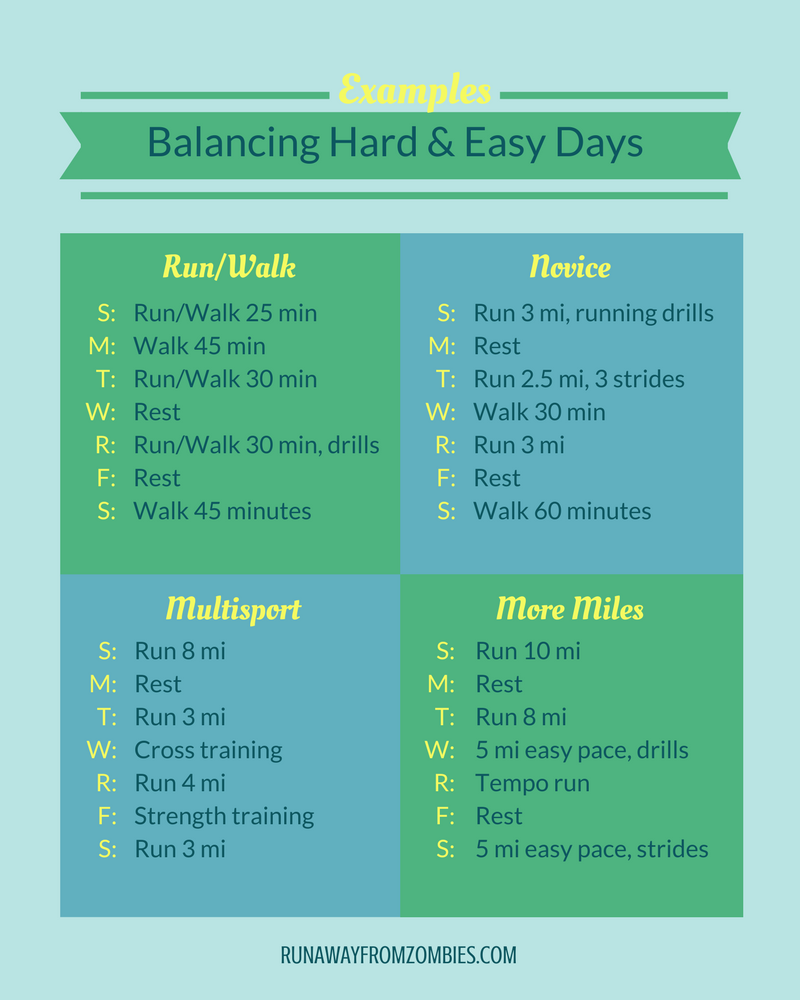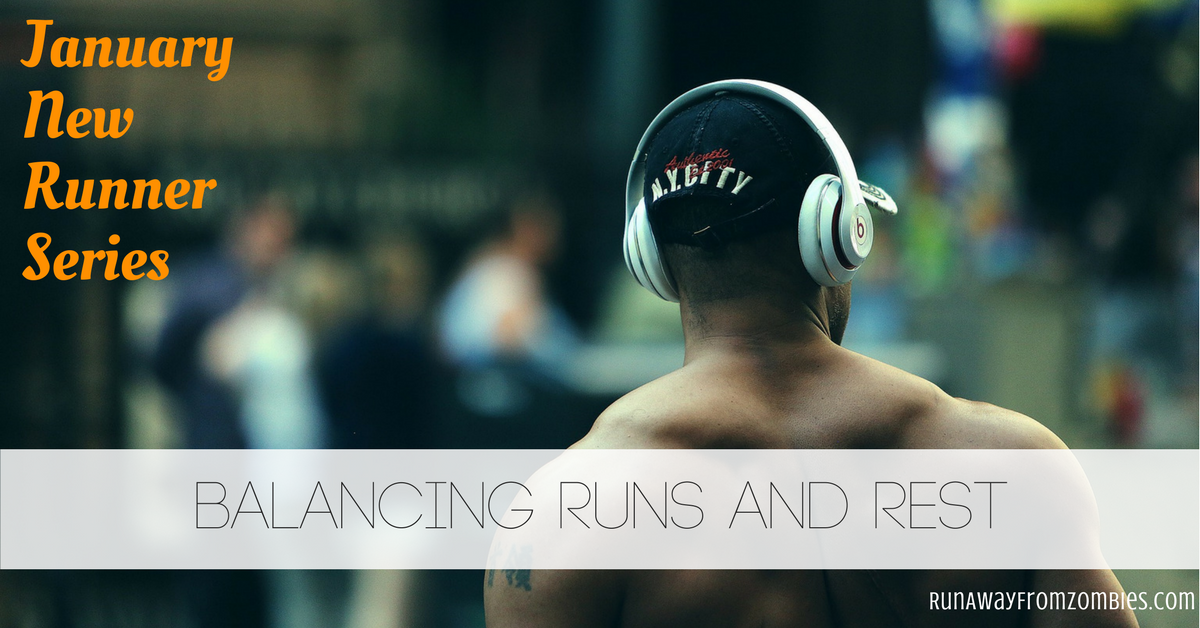Just like running slower, taking rest days is counterintuitive, but essential to your running program.
Following hard workouts with easier workouts or rest days is key for beginners and the world’s elite, alike.
Run or Rest: Why Rest?
To understand why you should rotate hard and easy days, it’s important to remember that you don’t get stronger when you exercise. You get stronger during the recovery process.
You put stress on your body when you run. In the days after your run, your muscles rebuild and your body adapts.
If you do hard running workouts every day, you won’t give your body time to actually benefit from your effort.
Benefits of alternating hard and easy days
- Grow stronger
- Train more efficiently
- Minimize injury risk
- Avoid overtraining
- Avoid burnout
What does a hard day look like?
That depends on where you are.
If you’re just starting out, any day you run is a hard day. Every run stresses your body, and you’ll gain strength when you rest.
Once your body adapts to running, a hard day is any effort above easy, conversational pace. Examples of hard days could be speedwork, tempo runs, or a long run.
 What does an easy day look like?
What does an easy day look like?
An easy day could mean zero working out, complete rest.
It could also be cross-training (cardio exercise using the same muscle groups as running), like swimming, pool running, biking, or walking.
An easy day could mean an easy run at conversation pace (you should be able to talk with your running partner without getting out of breath). Just make sure to actually run at an easy pace. Oftentimes, recovery runs are done too fast, negating their benefits.
Don’t overlook days of complete rest!
Is there a time for back-to-back hard days?
Yes, but there is always a specific purpose and intention for consecutive hard days.
For marathoners, running a shorter pace run next to a long run is good practice for time goals. Back-to-back long runs are a staple for ultramarathoners, teaching them to run on tired legs during a 50 or 100 mile race.
Consecutive hard days should have a specific purpose, be placed mindfully in programs, and be followed with sufficient rest.

Hard and Easy Weeks
Zooming out from hard and easy days, look at your training at a week and month level.
Cutting back the mileage to 80-90% every 3rd or 4th week will allow your body some more active recovery and allow you to keep training hard in the weeks after.
The Big Picture
By alternating hard and easy efforts instead of pushing yourself constantly, you’ll be able to improve faster and be able to sustain your workout routine week after week.
*This post is part of the January New Runner Series. Check out the other posts here and download the free New Runner ebook.*






Major thanks for the blog post.Thanks Again. Fantastic.